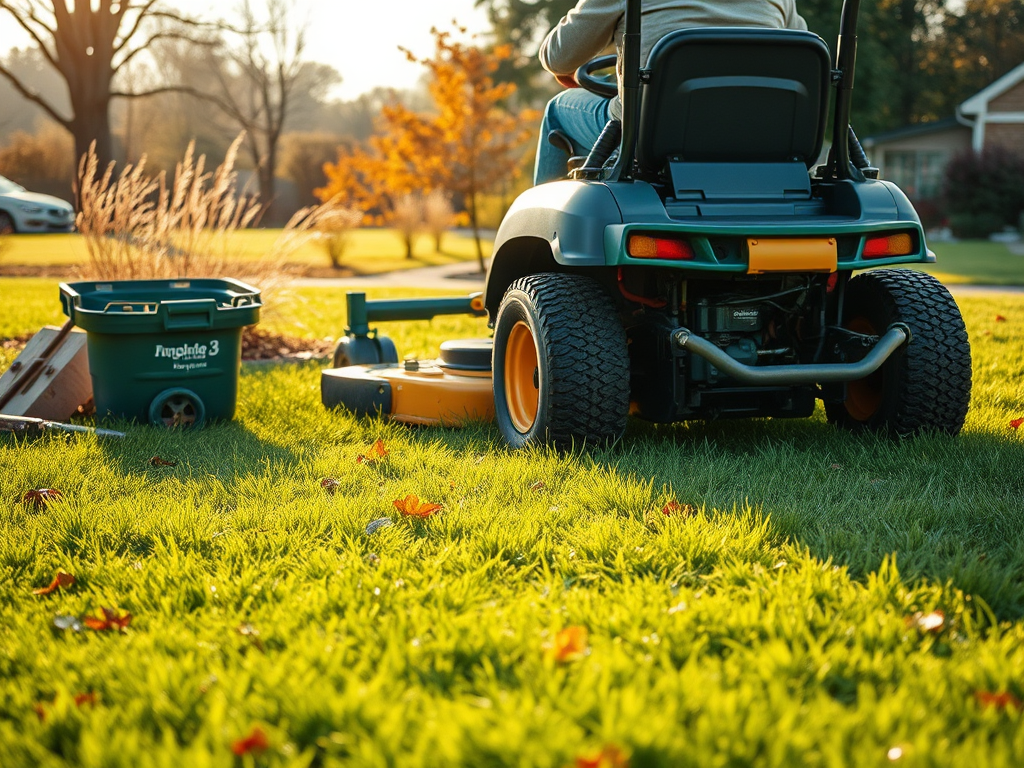Yes, we’ve just had our first snowfall that’s actually stuck to the ground. So your lawn is probably the last thing on your mind right now!
However, I often find the winter to be the best time to think ahead about things like my yard–since I’m not in the thick of maintaining it during the busy warmer months, it’s easier to clear my head and assess what’s going well, and what needs to change!
Maintaining a lush, green lawn is no easy feat, and many homeowners unknowingly make common mistakes that hinder their lawn’s health. From improper watering to incorrect mowing practices, these mistakes can lead to a patchy, unhealthy lawn that’s tough to revive. Fortunately, understanding what to avoid is the first step toward a healthier, more vibrant yard. Here are five lawn care mistakes you may be making—and how to fix them.
Over-Watering
One of the most common mistakes that people make when it comes to the care of their lawn is over-watering. While it seems logical that more water equals a healthier lawn, too much water can actually harm your grass–and it can be really tough to determine when “enough” has become “too much”. It’s not always as obvious as soft, mushy turf or mud puddles. Over-watering can lead to shallow root systems, fungus growth, turf diseases, and a buildup of thatch. To avoid this, water your lawn deeply, but less frequently. Aim for about 1 to 1.5 inches of water per week, either from rainfall or irrigation. Watering in the early morning is best, as it allows the grass to dry out before evening, reducing the risk of disease. There are online calculators available that will help you to determine how close to the 1.5 inch mark you are–or you can speak with a landscape professional, who may even be able to help you to calculate the output of your sprinkler system, if you’re really wanting to dial things in.
Incorrect Mowing
Mowing your lawn incorrectly can cause stress to your grass, leading to poor growth. One of the biggest mistakes most commonly made in this area is mowing too short. When grass is cut too short, it weakens the plant and makes it more susceptible to weeds, pests, and drought. Keep your mower blades sharp and set to the right height—generally around 2.5 to 3 inches for most grass varieties, especially in drier climates, where the longer grass also aids in moisture retention, keeping your grass looking happier and healthier. Additionally, avoid mowing when the grass is wet, as it can lead to uneven cutting and clumping.
Another mistake many people make in this area is waiting too long between cuts. When you’re cutting your grass, for the health of the plant, you don’t want to be taking off more than a third of the blade, so that it’s not a massive shock to the plant. In many cases, we’ve seen people wait until their grass is six or seven inches long, and then they want it cut down to two inches, which not only results in a poor-quality cut, but also harms the grass itself. This is why many landscape maintenance providers won’t cut on bi-weekly schedules except in particular circumstances–it’s not good for your turf and leaves behind a lower-quality end product for you as the consumer.
Neglecting Soil Health
Many homeowners focus on what they can see—such as the grass—without thinking about the soil beneath it. Healthy soil is the foundation of a healthy lawn. If your soil is compacted, it can restrict root growth and water absorption. Aerating your lawn once or twice a year allows water, air, and nutrients to reach the roots. Additionally, testing your soil periodically and adding the appropriate fertilizers or amendments can help balance its pH and improve overall health. It’s essential, too, to ensure you’re not over-fertilizing or over-supplementing your lawn. While we often think that “more of a good thing is just more good”, in many cases, “too much of a good thing is just really…really…not…good.” (Yes, you can quote me on that!). An excess of compost/organic material, or too much fertilizer, or too much of other amendments can not only negatively affect the health of the soil and grass, but can actually create problems and structural/cultural issues within your soil which can take years of work and loads of money to rectify.
Using the Wrong Products
Not all fertilizers, pesticides, and herbicides are created equal. Using the wrong products—or using them at the wrong time—can harm your lawn. For instance, applying a high-nitrogen fertilizer during the summer can cause the grass to grow too quickly, leaving it vulnerable to disease. Always read the labels of any products you use and follow the recommended application schedule. And remember, organic or natural products are often gentler on your lawn and the environment. They may take a little longer to provide the results you’re looking for, or may take more applications to achieve your goals, but in the end, the best things in life generally take more time–and in the end, the organic options often create a healthier, more robust and resilient lawn or landscape by promoting overall systemic health.
Ignoring Lawn Maintenance Seasons
Lawn care is not a one-size-fits-all task—it changes with the seasons. Many homeowners make the mistake of neglecting their lawn in the fall and winter, when it needs preparation for the colder months. Fertilizing in the fall, aerating, and mowing one last time before winter helps your lawn stay strong through the colder months and ensures that it stands the best chance to bounce back quickly in the spring.
Similarly, in spring, focus on dethatching, reseeding/overseeding, and applying a balanced fertilizer to give your lawn the nutrients it needs for optimal growth.
Conclusion
Taking care of your lawn isn’t just about regular watering and mowing—it’s about understanding what your grass needs to thrive. By avoiding these common mistakes and adopting smarter lawn care practices, you’ll see a healthier, more resilient lawn. Proper watering, mowing, soil care, and seasonal maintenance will set you on the path to a lush, green yard that you can enjoy all year long.




